#pulsar signal
Explore tagged Tumblr posts
Text
love artist impressions based on data of exoplanets but for some reason absolutely thrilled by the Shittiest Actual Photographs we have of them. the obvious thing is that unlike stars, exoplanets are 1)small and 2)not usually emitting any strong visible light. this makes them near impossible to get a clear photo of and every image you see of a fully defined sphere with colors or clouds is entirely from the mind of an artist based on the available data and conclusions of said data of that particular insterstellar piece of Thing. every photograph of the real physical object is always Very small and ... doesn't tell you much because the planet itself only takes up maybe 3% of the image
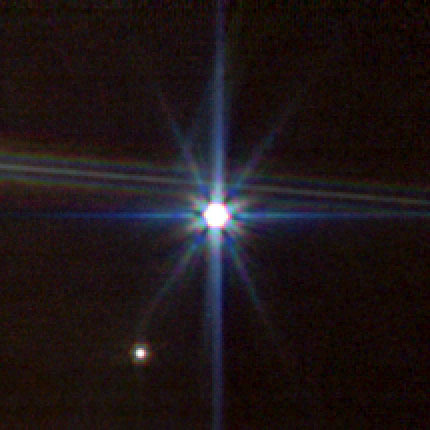
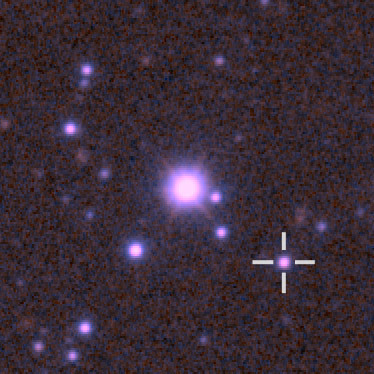
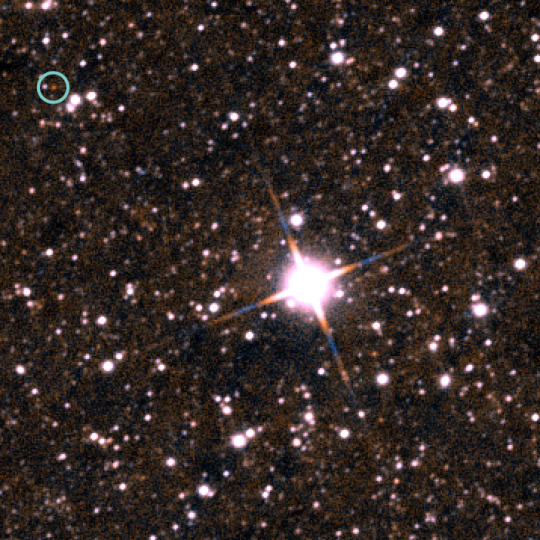

if i had to take a guess, to get any visual on them you need them to be reflecting the light of their nearby star At An Angle Facing The Camera, and slash or giving off their own infrared light, and even then theyre still So Small that they show up as just little glowing jellybeans
when it comes to Different Kinds Of Stuff In Space just being able to barely see these things that we know exist makes me bizarrely nervous and delighted, not for the fear of like oh aliens are gonna fucking get me or anything but i think for just being aware of something unfathomable far out of our reach. like an ant suddenly realizing that its living on a massive globe larger than anything its ever understood and on the other side of that globe is like, a dilapidated barn or something else seemingly inane in the grand scheme of things and the ant has to sit and think about what that barn is like for the thrill i suppose
#now black holes i absolutely was afraid of as a child even without pictures because what if one of those small ones showed up#and just crushed us all like a trash compactor instantly. not even like drifted in just What if it appeared#It could happen to you#shoutout also to signals in space. crab nebula pulsar you have a beautiful voice (multiple blasts of radiation a second)
79 notes
·
View notes
Text

Lead study Mexican author Luis Rodríguez, a professor emeritus at the Institute of Radio Astronomy and Astrophysics at the National Autonomous University of Mexico
In 2023, the James Webb Space Telescope (JWST) helped identify hundreds of free-floating "rogue" planets that don't orbit a parent star. Now, astronomers have found that a pair of these planets may be producing enigmatic, hard-to-interpret radio signals.
The rogue planets spotted by JWST lie in the Orion Nebula, a long-time observational hotspot for astronomers. In total, they number over 500. This discovery bonanza was possible thanks to JWST's ability to pick up infrared radiation emitted by these relatively young planets.
Bizarrely, though, about 80 of these planets exist as pairs. Similar in mass to Jupiter, the planets orbit each other at distances ranging from 25 to 400 times the distance between Earth and the sun. These tangoing duos, called Jupiter-mass binary objects (JuMBOs), pose a huge mystery for astronomers, because the existence of these worlds challenges current theories of planet formation. Some scientists think these objects may not even be planets but rather previously unknown entities that are larger than planets but smaller than brown dwarfs, which are sometimes called "failed stars" because they blur the line between planets and stars.
The JWST data showed that JuMBOs generated infrared radiation, but the new study's authors wanted to see if these dancing objects produced radio waves. That's because different classes of cosmic objects produce distinct patterns of radio emissions. For instance, planets like Jupiter spew several types of radio signals, including gigahertz-frequency emissions thousands of times higher-pitched than an FM signal, partly because of their magnetic fields.
Spotting such signatures from the JuMBOs could help resolve their identity. The observations could also explain "why some objects have detectable radio emission and others do not," lead study author Luis Rodríguez, a professor emeritus at the Institute of Radio Astronomy and Astrophysics at the National Autonomous University of Mexico, told Live Science in an email.
To find radio wave "snapshots" of the Orion Nebula where the JuMBOs reside, the scientists combed through archives of observations maintained by the U.S. National Radio Astronomy Observatory (NRAO). They found just one pair that apparently emits radio waves: JuMBO 24. Itself an oddity among the oddball objects, it's the heaviest of the JuMBOs, and also the one with the tightest space between its component planets.
A decade's worth of data the research team collated showed that the radio waves remained steady but strong, with a power of roughly a quarter of a ton of TNT and frequencies of 6 to 10 gigahertz. The radio waves also weren't circularly polarized, meaning they lacked spiral, twisting electric fields, the team reported in their study, published Jan. 8 in The Astrophysical Journal Letters.
But these features aren't what astronomers expect of signals created by planets." Circular polarization is an unambiguous indicator of the presence of magnetic fields," Rodríguez said. Without this, the team can't say definitively that the signals come from JuMBO 24 (assuming the planets have magnetic fields). Besides, radio emissions from other exoplanets are more variable and less intense.
Even if JuMBO 24 isn't a pair of planets but rather another type of cosmic duo, the signals are unusual. Signals from brown dwarfs are very different from the newly identified radio beams. The beams' brightness and frequency even ruled out the possibility of pulsars, the rapidly spinning cores of dead stars that produce pulses of radio waves at regular intervals.
The researchers also estimated the likelihood that the signals originate from an object behind JuMBO 24 and found it to be exceedingly slim, at just 1 in 10,000. And, in case you were wondering, the signals probably don't originate from aliens. "The fact that both components emit at similar levels favors a natural mechanism," Rodríguez said.
With the research at an impasse, the team is applying to the NRAO's Very Large Array in New Mexico to collect data from free-floating planets. Until then, the radio signals will remain a mystery.
#🇲🇽#STEM#Luis Rodríguez#mexican scientists#astronomy#science#Institute of Radio Astronomy and Astrophysics#National Autonomous University of Mexico#James Webb Space Telescope#JWST#radio signals#planets#orion nebula#Jupiter-mass binary objects#JuMBOs#brown dwarfs#jupiter#JuMBO 24#The Astrophysical Journal Letters#pulsars#mexican#latino#hispanic
10 notes
·
View notes
Text
Triple Quad Turbolasers

STAR WARS EPISODE I: The Phantom Menace 01:53:48
#Star Wars#Episode I#The Phantom Menace#Vuutun Palaa#Droid Control Ship#Battle of Naboo#Lucrehulk-class LH-3210#Naboo system#triple quad turbolaser battery#pulsar tracking#laser tip#droid signal receiver station#laser barrel#laser actuator#swivel mount#power cycler#cooling piping#rotator
0 notes
Text
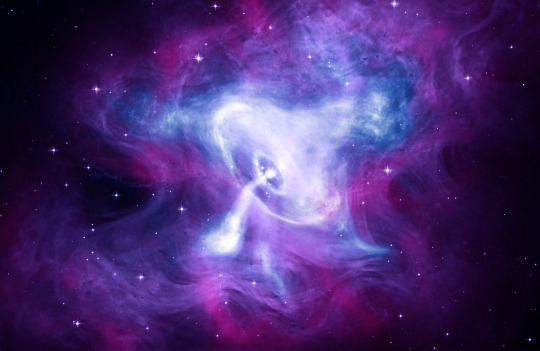
Navigating Deep Space by Starlight
On August 6, 1967, astrophysicist Jocelyn Bell Burnell noticed a blip in her radio telescope data. And then another. Eventually, Bell Burnell figured out that these blips, or pulses, were not from people or machines.

The blips were constant. There was something in space that was pulsing in a regular pattern, and Bell Burnell figured out that it was a pulsar: a rapidly spinning neutron star emitting beams of light. Neutron stars are superdense objects created when a massive star dies. Not only are they dense, but neutron stars can also spin really fast! Every star we observe spins, and due to a property called angular momentum, as a collapsing star gets smaller and denser, it spins faster. It’s like how ice skaters spin faster as they bring their arms closer to their bodies and make the space that they take up smaller.
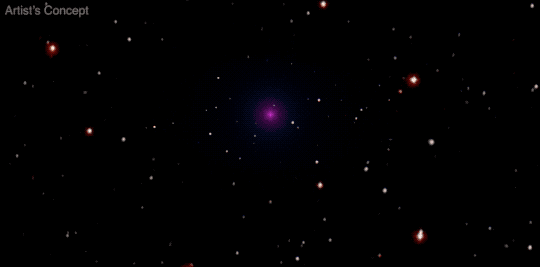
The pulses of light coming from these whirling stars are like the beacons spinning at the tops of lighthouses that help sailors safely approach the shore. As the pulsar spins, beams of radio waves (and other types of light) are swept out into the universe with each turn. The light appears and disappears from our view each time the star rotates.

After decades of studying pulsars, astronomers wondered—could they serve as cosmic beacons to help future space explorers navigate the universe? To see if it could work, scientists needed to do some testing!
First, it was important to gather more data. NASA’s NICER, or Neutron star Interior Composition Explorer, is a telescope that was installed aboard the International Space Station in 2017. Its goal is to find out things about neutron stars like their sizes and densities, using an array of 56 special X-ray concentrators and sensitive detectors to capture and measure pulsars’ light.

But how can we use these X-ray pulses as navigational tools? Enter SEXTANT, or Station Explorer for X-ray Timing and Navigation Technology. If NICER was your phone, SEXTANT would be like an app on it.
During the first few years of NICER’s observations, SEXTANT created an on-board navigation system using NICER’s pulsar data. It worked by measuring the consistent timing between each pulsar’s pulses to map a set of cosmic beacons.
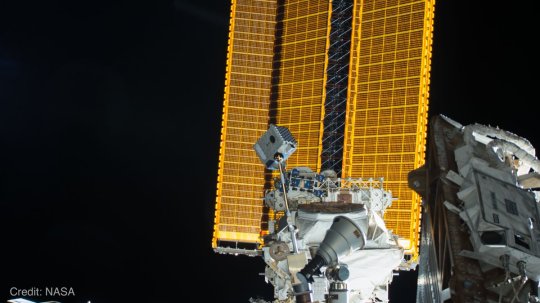
When calculating position or location, extremely accurate timekeeping is essential. We usually rely on atomic clocks, which use the predictable fluctuations of atoms to tick away the seconds. These atomic clocks can be located on the ground or in space, like the ones on GPS satellites. However, our GPS system only works on or close to Earth, and onboard atomic clocks can be expensive and heavy. Using pulsar observations instead could give us free and reliable “clocks” for navigation. During its experiment, SEXTANT was able to successfully determine the space station’s orbital position!

We can calculate distances using the time taken for a signal to travel between two objects to determine a spacecraft’s approximate location relative to those objects. However, we would need to observe more pulsars to pinpoint a more exact location of a spacecraft. As SEXTANT gathered signals from multiple pulsars, it could more accurately derive its position in space.
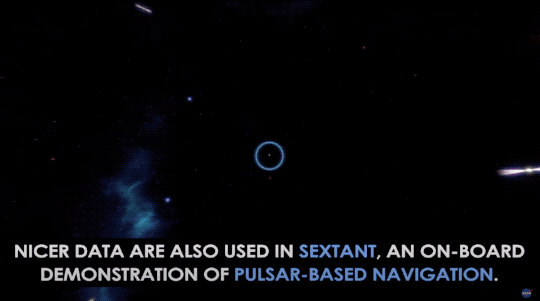
So, imagine you are an astronaut on a lengthy journey to the outer solar system. You could use the technology developed by SEXTANT to help plot your course. Since pulsars are reliable and consistent in their spins, you wouldn’t need Wi-Fi or cell service to figure out where you were in relation to your destination. The pulsar-based navigation data could even help you figure out your ETA!
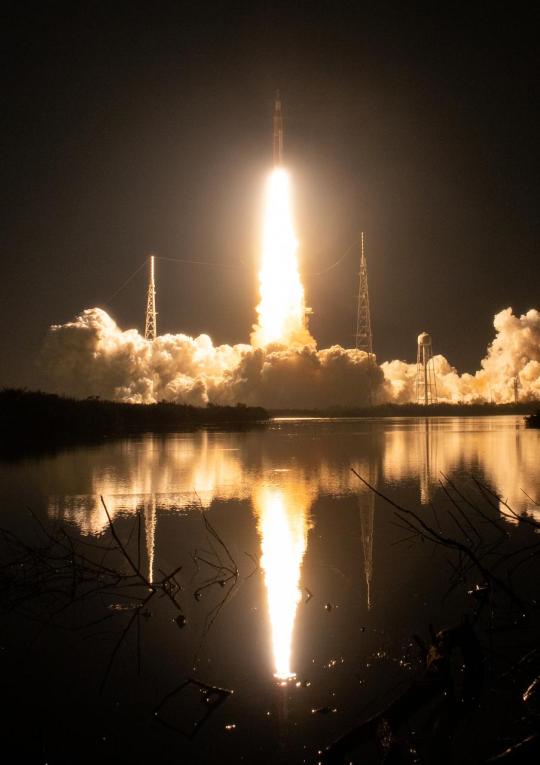
None of these missions or experiments would be possible without Jocelyn Bell Burnell’s keen eye for an odd spot in her radio data decades ago, which set the stage for the idea to use spinning neutron stars as a celestial GPS. Her contribution to the field of astrophysics laid the groundwork for research benefitting the people of the future, who yearn to sail amongst the stars.
Keep up with the latest NICER news by following NASA Universe on X and Facebook and check out the mission’s website. For more on space navigation, follow @NASASCaN on X or visit NASA’s Space Communications and Navigation website.
Make sure to follow us on Tumblr for your regular dose of space!
#NASA#pulsar#Jocelyn Bell Burnell#spaceblr#space#star#neutron star#deep space#telescope#navigation#universe#astronomy#science
4K notes
·
View notes
Text
Forgetting
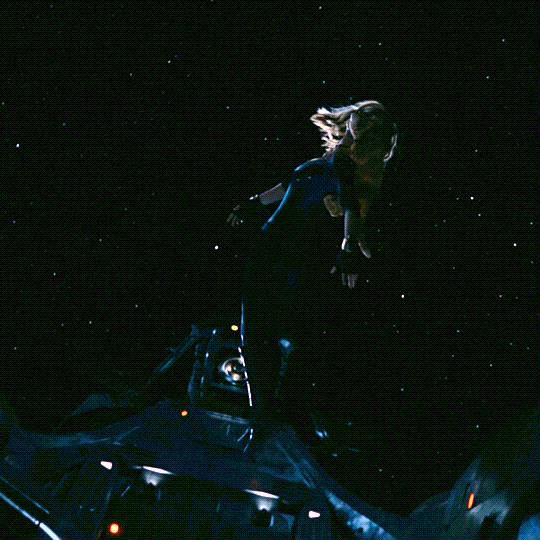
Carol Danvers x fem!reader Warnings: established relationship, long distance, fluffy times, explicit language, implied sex (let me know if I've missed anything!) Word Count: 1.2k
Summary: It's been nearly a year since you've seen your girlfriend and almost two months since you've heard from her. And you're beginning to worry that she's forgotten about you. After all, the universe is a big place.
357 days. That’s how long it had been since you’d seen your girlfriend. You tried to think of yourself like a military spouse. After all, Carol did used to be in the Air Force. And she did travel to far-away, dangerous places to protect people, with very limited communication for long periods of time. It’s just that her dangerous locations were in other galaxies instead of other countries.
You were used to her being gone or, well, as used to it as you could be. The longer her absence went on, the more used to it you got, but somehow it also became harder. When she first set off on this mission, she’d been in your galaxy, so communications had come faster and with more regularity. Less space and time for them to travel through. But the farther away she got, the longer it took her messages to get to you. You were lucky if you got one email a month.
It wasn’t personal. You knew that. She was far away. Even with the best technology S.H.I.E.L.D. could provide to a civilian, her communication with you was still slow and limited. But, god, you missed her. You missed her laugh. You missed the warmth of her next to you in bed. You missed the way she propped her leg up when she sat down, no matter what kind of chair it was. You hung on every word of her emails, going over them so often you’d memorized them.
It had been two months since Carol’s last email. It was a long time to go without communication, even for her. The irrational part of your brain was desperately worried for her. There’s no telling what kind of high-risk situations she got herself into out there. But you knew that if anyone could handle themselves against all the forces of evil in the universe, it was Carol. You also knew that S.H.I.E.L.D. would have contacted you immediately had anything happened to her.
Another part of your brain–equally irrational but much harder to talk down–worried that Carol had forgotten you. The universe that Carol traversed was huge. Infinite, even. She saw things no one else had ever seen. Met people and experienced cultures that were so different from ours on Earth that we’d never even dream them up. Who’s to say she hadn’t found somewhere–someone–more beautiful than here, with you? She saw entire worlds, the neverending canvas of space and time. How could it possibly be that, of all the things in the known universe, you were the one worth coming home to? You always worried that maybe, this time, you weren’t.
As you climbed into bed, missing, as always, the feeling of Carol’s arms wrapped around you, the rise and fall of her chest as she slept, you once again pulled up her most recent email. From 61 days ago.
Hi, baby. I hope all’s well on Earth. I’m sad I’m missing spring–you know it’s my favorite season. Are there apricots on the tree yet? Or just buds? I’d give an arm for an apricot right now. I’m farther out than normal, so you might not hear from me for a while. One of the Andromedas. 2.7 lightyears away, if you can believe it. It scares me a little to be so far away from you.
I know I’ve said it before, but it gets lonely out here. Sometimes I wish you could come with me, but I know your body wouldn’t handle space-time travel like mine does. Superhero probs. Also, it’s probably not fair for me to make you put your entire life on pause just because I miss you like crazy.
It’s so beautiful out here in a weird, quiet way. I wish you could see it. Yesterday, I passed a pulsar. A star carcass, as I like to call them. They’re these gigantic masses of spinning light that put out radio signals (which might interfere with how quickly you get this, fuck pulsars). You’ve never seen something so big. So big it’s almost hard to believe it’s really there.
Anyway. I’m rambling. I miss you so much. I always miss you, but this time feels harder for some reason. I miss the way your eyes crinkle when you smile. I miss the way your hair sticks up in the morning. I miss kissing you. I miss doing more than kissing you. I just miss you.
I’m not sure when I’ll get home, but I think about you every day, every second. Nothing in this galaxy or the next or the next compares to you. Please stay safe. Don’t be sad. Snuggle Goose for me.
I love you.
Carol
You fell asleep reading through the email, again and again, your phone going dark in your hand beside you as you drifted off. You dreamed of pulsars. You dreamed of Carol.
Hours later, you jerked awake, gasping, as you felt a hand on your shoulder.
“Hey, hey!” a voice said, calming, reassuring. “It’s just me.”
You’d know that voice anywhere. “Carol!” you squealed, grabbing her and pulling her onto the bed with you, holding her as tight as possible so she could never, ever leave you for so long again. “You’re home!”
You felt her smile against you as she buried her face in your neck, wrapping her strong arms around you. She smelled metallic, almost like gunpowder; you knew it by now–the smell of space. “Hi, baby,” she whispered, breathing you in. “I missed you so much.”
Still holding you close, Carol sat up a bit to just look at you, just take you in. She ran her hand along your cheekbone and pressed a warm kiss to your mouth. A kiss you’d been so desperate for, you thought you might die from relief. Her lips tasted like space, too, the way metal smells after rain. So uniquely her. How many other people could say they knew the taste of space?
“Are you crying?!” Carol asked, alarmed, as she brushed a few tears from under your eyelids.
You sniffed and mumbled, “I thought maybe you forgot about me.”
Carol pulled you to her chest, running her fingers through your hair, lightly grazing her fingernails against your scalp. You shivered at the sensation.
“Oh, baby,” she breathed. “I could never forget about you.”
“But there’s so much out there.”
“Mmhm,” she said, kissing your nose. “And none of it’s as beautiful as you.”
When she moved to stand up, you grasped her hands. “No, no! Stay here and snuggle!”
She laughed, grinning from ear to ear, as she pushed your hair back from your face. “I have to shower, Y/N. I smell like an asteroid.”
You leapt out of bed to stand next to her, looping your arm and hand through hers and leaning against her shoulder. You couldn’t get enough of her, couldn’t get close enough. You never wanted to let her go.
“Can I join you?” you asked, blushing a little. After all, it had been nearly a year.
Carol looked at you lovingly, smiling softly, a few of her own tears building. She squeezed your hand and dragged you after her into the bathroom. “God, yes.”
#carol danvers#carol danvers x reader#carol danvers x fem!reader#carol danvers fanfic#carol danvers fluff#captain marvel#captain marvel fanfic#carol danvers one shot#mcu#marvel mcu
304 notes
·
View notes
Text
CAN TWO SUPERMASSIVE BLACK HOLES MERGE??
Blog#440
Saturday, September 28th, 2024.
Welcome back,
A team of astrophysicists that includes the University of Toronto’s Gonzalo Alonso-Álvarez has shown that pairs of supermassive black holes can merge together into a single, larger black hole – a major breakthrough in addressing what is known as the "final parsec problem."
longstanding astrophysics problem refers to a discrepancy between the detection of gravitational signals permeating the universe – which astrophysicists previously hypothesized had emanated from millions of merging pairs of supermassive black holes (SMBHs) – and theoretical simulations which showed that the approach of SMBHs stalls when they’re roughly one parsec (about three light years) apart.
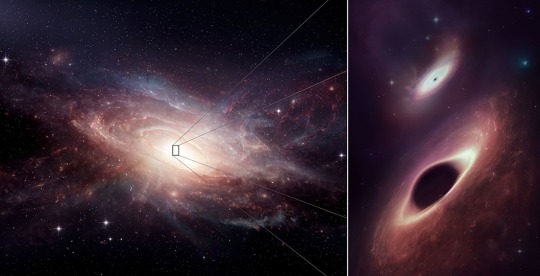
Not only did the final parsec problem conflict with the theory that merging SMBHs were the source of the gravitational wave background, it was also at odds with the theory that SMBHs – each billions of times more massive than our Sun – grow from the merger of less massive black holes.
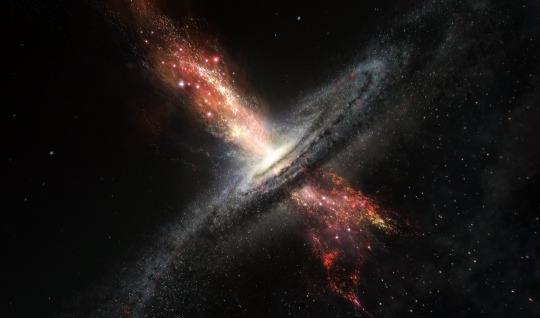
The new research, published in Physical Review Letters, has shown that pairs of SMBHs can indeed break through the one-parsec barrier and merge into a single black hole. This is demonstrated by calculations showing that SMBHs continue to draw closer because of previously overlooked interactions with particles within the vast cloud of dark matter surrounding them.
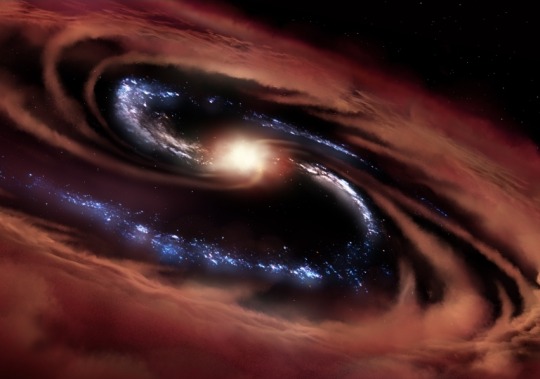
“We show that including the previously overlooked effect of dark matter can help supermassive black holes overcome this final parsec of separation and coalesce,” says Alonso-Álvarez, a post-doctoral fellow in the department of physics at U of T’s Faculty of Arts & Science and the department of physics and Trottier Space Institute at McGill University, who is first author on the paper. “Our calculations explain how that can occur, in contrast to what was previously thought.”
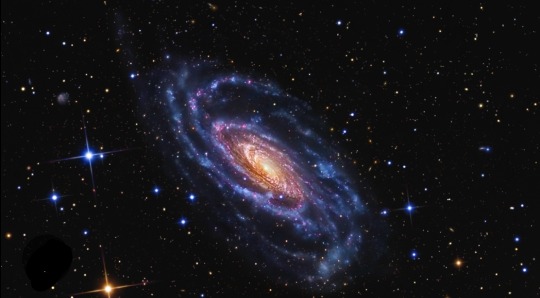
SMBHs are thought to lie in the centres of most galaxies. When two galaxies collide, the SMBHs fall into orbit around each other; as they revolve around each other, the gravitational pull of nearby stars tugs at them and slows them down, causing them to spiral inward toward a merger.
Previous merger models showed that when the SMBHs approached to within roughly a parsec, they begin to interact with the dark matter cloud or halo in which they are embedded. These models indicated that the gravity of spiraling SMBHs throws dark matter particles clear of the system.
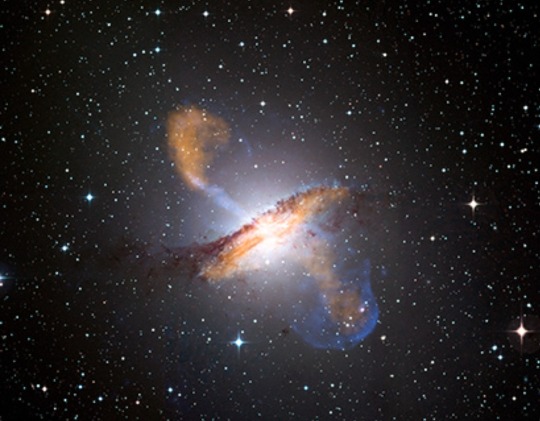
The new model introduced by Alonso-Álvarez and co-authors James Cline, a professor at McGill University and the European Organization for Nuclear Research (CERN) in Switzerland, and Caitlyn Dewar, a graduate student at McGill, reveals that dark matter particles interact with each other in such a way that they are not dispersed. The density of the dark matter halo remains high enough that interactions between the particles and the SMBHs continue to degrade the SMBH’s orbits – clearing a path to a merger.

“The possibility that dark matter particles interact with each other is an assumption that we made, an extra ingredient that not all dark matter models contain,” says Alonso-Álvarez. “Our argument is that only models with that ingredient can solve the final parsec problem.”
The background hum generated by these colossal cosmic collisions is made up of gravitational waves of much longer wavelength than those first detected in 2015 by astrophysicists operating the Laser Interferometer Gravitational-Wave Observatory (LIGO).

Those gravitational waves were generated by the merger of two black holes, both some 30 times the mass of the Sun.
The background hum has been detected in recent years by scientists operating the Pulsar Timing Array. The array reveals gravitational waves by measuring minute variations in signals from pulsars, rapidly rotating neutron stars that emit strong radio pulses.
Originally published on https://www.utoronto.ca
COMING UP!!
(Wednesday, October 2nd, 2024)
"WHERE DID MARS' ATMOSPHERE GO??"
#astronomy#outer space#alternate universe#astrophysics#universe#spacecraft#white universe#space#parallel universe#astrophotography
76 notes
·
View notes
Text
hello! i've got some GROUNDBREAKING space news for you!
scientists have uncovered evidence for a gravitational wave background (GWB) in our universe, and the way they went about it is fascinating.
To fully understand what's going on here, we need to go into a bit of background information.
First of all: what are gravitational waves? gravitational waves are often called 'ripples' in spacetime, often caused by extremely energetic processes such as black holes colliding, or two neutron stars orbiting each other closely.
So, how did scientists figure this out? They used 67 pulsars (known as the Pulsar Timing Array) throughout the Milky Way, practically creating a galaxy-sized telescope in order to study this.
Pulsars are the extremely dense cores of massive stars, left over after they go supernova. These are fascinating on their own, but for this project, they had an essential feature: Pulsars rapidly rotate (think up to hundreds of rotations per second), spewing radiation out in pulses from their magnetic poles. For some pulsars, these radiation jets cross Earth's line of sight, and we get incredibly constant bursts of radio signals, which can be catalogued and used as a sort of standard, universal clock.
Here is a link to a gif showing the rotation of a pulsar. Please be warned for flashing and eyestrain.
For 15 years, a team of astronomers working for the North American Nanohertz Observatory for Gravitational Waves (NANOGrav), used radio telescopes around the globe to track minuscule changes in the signal patterns from pulsars. The changes they found are due to the slight movement of spacetime between us and the pulsars, stretching and compressing the paths of their radio waves as extremely low frequency gravitational waves pass through the universe (yes, that includes you. your atoms, as well as the atoms making up everything around you, are very slowly shifting position, dancing along to the heartbeat of the universe).
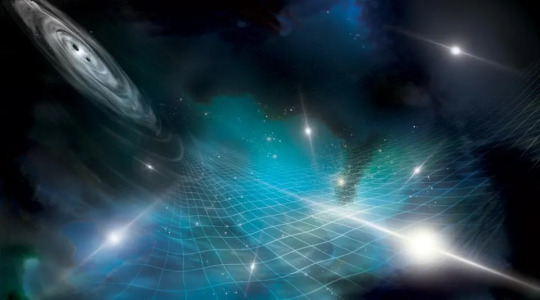
At the moment, scientists are still debating what could have caused this gravitational wave background, but some there are some leading theories: the GWB could be caused by trillions of binary black hole systems (black holes orbiting each other) throughout the universe. It could also be due to cosmic inflation, or even the big bang itself. Scientists just don't know yet, but the opportunities this discovery opens up are incredible.
The knowledge of the GWB could help us better understand the formation of early galaxies, or even help us understand the origin of the universe.
#aspaceinthecosmos#space#astronomy#outer space#just jupiter#astrophysics#gravity#gravitational waves#physics#pulsars#black holes#neutron stars#the universe#LIGO
618 notes
·
View notes
Text
A leap of faith and physics
We thought for a civilization to form, one needed liquid water, a stable planet with a hot core, and tardium crystals. Apparently, this is not so.
Because we just received a vibromessage over the tachyon network from an unknown source.
Which in itself would not be too unusual. Plenty of newly realized civilizations figure out how to configure tardium to send tachyon messages across isospace. Hoping someone will answer. We always do. It always takes some time to go from simple repeating messages to understanding one another. Most civilizations don't come up with the galactic standard modulation on their own. Nor do we know their form of communication all that well, language, culture, all of that.
First contact is always a lengthy affair, until the new species is integrated into the intergalactic community. Then follows the exchange of knowledge and culture, the setting up of historical archives and sharing of starcharts. Since light travels only at luxionic speed, the charts provide a valuable look at the past. Once the new civilization has been caught up to date, things tend to settle. Updates are fewer and far in between, and culture tends to somewhat homogenize. Not completely, of course, as everyone has different living circumstances, but with all the exchange between us, some settling is bound to happen.
But we know where tardium reserves are, have felt the reverb of our scans, we know where civilizations could potentially pop up. The message we received was unusual not because its source was unknown, but because it came from a sector without any sufficient tardium deposits.
That... shouldn't even be possible!
The signal is also a bit noisy. Strange. Usually, the bigger the tardium array, the more self-stabilization should occurr. And for interstellar communication, you tend to need quite large arrays. So then why was there so much noise?
It was clearly a signal, and according to the triangulators, it came from the outer third of a dark spiral galaxy. We call them that, since they were never really observed, at least not with any isocartography. We only know they're there due to shared star charts. No idea what's going on with them at the current isotime. We can't know, without any tardium resonance to pick up.
Anyway, of course we answered. Their signal had been prime numbers, if we demodulated it correctly, followed by things we couldn't really make sense of. It was standard practice to begin communications with mathematics, and fundamental harmonics. It's strange that they did that right away, but not unheard of. We sent back primes, and then a couple of playful harmonics. Music. What we received back was weird, because we thought it was music, but it wasn't.
It turned out to be a starchart, and not just any kind. Pulsars. We sent back a chart of their galaxy, as reconstructed from several older starcharts. Then, we waited for their answer. And waited. And waited. An entire solar cycle (of our species) later, we finally got another answer.
And it just would not stop. We recognized it was a series of images, or rather, rapid successions of images, together with harmonics on a different band as well. This was video! The footage depicted a bipedal species, with symbolics next to different features. The images cycled through different body parts, with different descryptions. We had a really hard time catching and saving all the data, a task which had to be offloaded to the communal computation grid, as our own planet simply did not have the capacity to do it alone. This should have tipped us off to what we were going to be dealing with, but it didn't.
We continued, almost business as usual, just a fair bit faster. Then objects were being shown, often together with the bipedals, and their corresponding glyphics were depicted right next to them. Also, each image was accompanied by a sound file. They really made learning their language easy for us. We learned that they called themselves Humans, and their home was Earth, a planet orbiting a yellow star. They were a surface dwelling species! Those are pretty rare, as most can not survive the exposure to open space for some reason. We then sent back images and glyphics of our own, matching them in their intent. We sent images of life forms, images of our own body parts, images of objects and always accompanied by isostandard glyphics.
Usually, once communication has come to a basic understanding, the exchange of culture would begin.
But the Humans had started out with primes and starcharts, so of course, their next communication wasn't about culture. We... honestly didn't know what exactly it was, for a while. Until some of the mathematicians from across the network found patterns. They were sharing mathematics with us!
Eager to help, we sent back entire databases full of insights. They requested more soon. So we sent more. And more. And more. We wondered how they could even store all that we sent them. We asked. They sent back something we didn't understand. We hoped the mathematicians could figure it out, but nope.
Eventually, we sent steam engine configurations, as well as the corresponding heating and shunting tardion-arrays used to power them. They sent back their own designs for steam engines. And other engines that seemed similar, but shoudn't work with steam. The machine configurations, piston layouts and such, were fairly primitive. As was to be expected from a new species. But they never sent us schematics of their heating or shunting arrays. When we asked how they kept things cool without shunting arrays, they sent back another steam engine. But, when we called it that, they corrected us. What they had shown us was a heat pump. They used the opposite effect, instead of creating movement from a temperature difference, they created a temperature difference from movement. We asked them why they wouldn't just use shunting arrays. They asked what those were.
And this is how we found out why they were in dark space. Why their signal was so noisy. And why they had never depicted heating or shunting arrays in their schematics.
They had practically no tardium. They simply did not have enough of it to make arrays, as we thought all civilizations do. The largest piece of tardium they had was the centerpiece of a gigantic machine. It was about the size of a human "nail", which is a vestigial claw originally used for superior grip on one of the native plant species of their planet.
We did not know how to respond. We could not comprehend how a civilization could form without tardium crystals. They asked us if we knew where more could be found, preferably near them. We didn't understand what they meant. Then they asked us how to locate reserves. We gave them the modulations that we use to scan for the crystals' tachyon resonance.
They thanked us, and ceased their questions. Then, communication became choppy. Only occasionally would we receive an exchange of culture. Their questions about mathematics and tardium crystals ceased.
---------------------
When we first received back an answer from the deep space tachyon dish, we were extatic. And shocked. And kind of in disbelief. Nobody had really known if it would work. Still, everyone in the control room agreed that we should make sure it was really a signal, before we dropped that bombshell to the public.
We focused a couple more dyson collectors onto the dish, and changed the signal. Instead of primes and harmonics, this time, we encoded the pulsar chart, multiple times, in every encoding we could think of, and sent them all.
Only a few hours later, we received another signal from the previous location. The encoding was our own, easily recognized. With shaky hands, i pressed the 'open image file' button.
When i was greeted by a picture of the Milky Way, everyone in the room lost their collective shit.
"Holy Fuck!" "Oh my god." Someone fainted. Multiple people cried. Nobody minded any of that.
~~~
The prime administrator creased her brow. The direct line was ringing. This better be important. "Hello? Prime administrator here." From the other end, she could hear someone suppressing tears, and whimpering: "Tachyon dish project operator here. We... we."
"Everything ok over there?", she asked. What could possibly have happened that had the scientist crying? Was there an accident with the dyson swarm or something? Did people die? No, she trusted the operator of that experiment to not call unless it mattered to the entire human race.
A wet chuckle. "Better than ok. Maam? We... We're not alone."
Not alone? What does that...? Oh. OH! oh
"Are.. you sure?" Dammit. Now even her own voice was shaking.
"We sent a pulsar chart and got a beautiful image of the Milky Way back, in the same image file type. Pretty sure at this point."
~~~
The following year was downright insane. The mere confirmation that we weren't alone in the universe spurred us all on. Artists did their best to show all sides of us, scientists got together to determine what questions we should ask, even the long obsolete military awakened from its slumber, churning out tactical analyses of possible tachyon based weaponry, and how to defend against it.
Some people were panicking, others in denial, but most relished the opportunities that might open up.
Policies were made, on how to handle aliens that would come to the solar system. Tachyon mechanics, an until now unproven theory, made leaps and bounds, scientists working as hard as they could to understand it better.
The dyson collectors were turned to multiple new research projects, powering large machines that channeled vibrations into the tiny crystals we had found to pick up on tachyon vibrations. The largest one that we had discovered while asteroid mining was still in the communication dish, but the smaller shrapnel, a couple millimeters in size at the most, were being utilized.
Eventually, after a year was up, communications resumed. The linguists sent data, and worked closely with the astronomers that had made the initial transmissions. We also received back data, and the scientific community devoured every piece of information. We learned their language as fast as we could.
But our requests for the sharing of scientific knowledge appeared to fall on deaf ears. Whenever we sent natural constants, or physical laws, we got nothing back. Well, almost. Our prodding did yield one answer: How to locate the crystals. Which were apparently common? Though our scans painted a different picture. We did have some scattered about the asteroid belt, yes. But the largest one we detected was only 3cm in diameter. A little bigger than the one in the communication dish, sure, but not that much.
We came to accept this, figuring that maybe there was some kind of prime directive that forbade the sharing of further technology. Actually, perhaps we leaned a bit too far into our Star Trek analogy. Because most of us would not get it out of our heads to try to build a warp drive. Well, not really a spacetime bending drive, but something that could go faster than light. Because, obviously, thanks to our discovery, we now knew that while the speed of light may be finite, the speed of information was not.
-----------------------------
After ten cycles of cultural exchange, the humans sent a request for isocoordinates of the nearest known civilization to their own. This request kind of drowned in the noise, we didn't really think about it much, we just transmitted our coordinates. Turns out, the nearest ones were us, in what the Humans call the Andromeda Galaxy.
Shortly after the request, they went totally vibrosilent. We tried and tried to contact them, but to no avail. This, while tragic, was a reality of civilization, though. Extinction events could always happen. Sometimes the affected civilization would realize in advance and send a couple warnings, but nobody could help them from afar, of course. So that's what we figured happened to Humanity. Maybe their sun blew up, or they got knocked away from it by a passing object, anything could have happened.
Many cycles passed. I had aged, my once young and springy exoskeleton now wobbly and soft, though my mind was still sharp enough to crew a communications array.
None of us were prepared for the schockwave resonating through our sensor grids. Multiple arrays straight up shattered. Luckily, as big as they were, there was nobody close to them, so no deaths. What the rest of them picked up though made no sense. We could determine there was a pulse, but no normal communication had that level of power, nor resonance.
Then, half a planetary rotation later, there was a new luminance in the sky. We were about to renew our arrays and update our starchart, when the light source moved. Toward the planet.
What?
And then, my assigned communications array resonated.
"This is the Human vessel Enterprise, calling anyone on the planet. Can you read us?" the crystal sang in choppy English, the language of the Humans. The ones we thought were extinct.
I scuttled to my post at the resonator, tuning it to reply:
"This is communications, we read you, but i don't understand? We are recovering from an unprecedented resonance pulse that shattered multiple arrays, sorry if the modulation is a bit off."
The answer was swift: "Sorry about that, our engines are a bit out of tune at this point. That pulse might have been us. Glad to hear you all down there, is anyone injured?"
"Your engines? And uh. No, nobody injured."
"Yes our engines, again, we apologize for that. But glad to know everyone is alright.
Requesting permission to land on the surface."
This was a momentous occasion, which i didn't realize until later on. The entire tachyon network would eventually refer to this exact communication as a reference time. This exact moment would come to be known as 0:0 PFJ
0 Cycles and 0 rotations Past First Jump.
The only thing i remember is absently giving permission, not quite understanding what exactly they were requesting here. If i had, i would have convened with the councils beforehand.
Then, the cave began to shake. It wasn't coming from any of the arrays. It was coming from the surface.
~~~
They. They were here. The Humans were here. On the surface. Of. Of our planet. What? How?!
Most importantly, why?!
Then i remembered the stories about their exploration of the surface of their own planet. How they had sent people to their poles, despite their biology not being fit to survive there. And several did die! How they climed mountains. Made pressurized vessels to dive below the surface of their open ocean. We asked them why. They told us.
I realized at that moment, not how they were here. But why.
"Because we could, and no human had been there before," they had answered back then.
430 notes
·
View notes
Text
Creature feature the desolation of a ruined laboratory Marco and Ace part of an extraction team answering the SOS ping from a distanct planet markered as keter class
Marco’s assigned because he’s got medical experience to rival his rescue resume, he’s also quite handy with a pulsar rifle and his reinforced skeleton is also a plus
Ace is also assigned because he’s never missed a shot, he’s also the best in the fleet for navigating hostile environments whilst airborne with the greatest end outcome
But when their team alights and commences their extraction mission the laboratory doors are blown wide open
Their first class bestiary expert and tracker Yamato makes the not so comforting observation that the tracks are leaving the facility, Ace doesnt particularly like that, no one does
They dont have time to hunt it though, their mission is to enter the facility rescue any survivors and get out, it would also be extremely stupid to go hunt whatever escaped down on the minimal information theyve got to go off of
The deeper they press forth into the facility it becomes far more apparent that there are in fact no survivors its also cold extremely so
So its no wonder that when Deuces voice crackles through their headsets that hes picked up a signature, its not heat based his voice sounds strained and unsure so Ace and Marco regroup and requests the rest of the team to round back to the gathering point on the main floor and they head down to find Deuce and Koala who are crouched behind a pair of obnoxiously heavy vacuum pressure doors
Ace signals deuce who shakes his head, whatever was in there hadnt been alerted to their presence
Peering around through the opening Ace sucks in a sharp breath at the sight, its a cell, but shaped like some parody of a room and curled up on the bed is a human, or so they assume hes tall, very tall or perhaps the cot is too small
Theres not alot of light in the room other than an emergency source flickering shallowly overhead in upsetting dissonance and the other source, his chest glowing red orange through pale translucent skin
30 notes
·
View notes
Text
Beep. Beep. Beep. The discovery of pulsars began with a mystery in 1967 when astronomers picked up very regular radio flashes but couldn’t figure out what was causing them. The early researchers toyed briefly with the idea that it could be a signal from an alien civilization, an explanation that was discarded but lingered in their nickname for the original object – LGM-1, a nod to the “little green men” (it was later renamed PSR B1919+21). Of course, now scientists understand that pulsars are spinning neutron stars sending out light across a broad range of wavelengths that we detect as very regular pulses – but the first detections threw observers for a loop.
NASA's Goddard Space Flight Center - Sound from Pulsar Vela PSR B0833-45
34 notes
·
View notes
Text

Searching For Solar Systems - November 15th, 1996.
"Observational astronomy has provided evidence of the existence of massive Jupiter-sized planets orbiting distant suns, protoplanetary disks of gas and dust surrounding newly formed stars, and planetary bodies orbiting exotic stellar corpses known as pulsars. Indeed, the formation of planets seems to be a broader and more varied phenomenon than previously imagined. Are there nearby solar systems with Earth-sized planets as well? Many would answer yes, but small, relatively low mass planets orbiting sun-like stars - which might be capable of supporting life - are extremely difficult to detect. One possible approach to this daunting observational problem is to regularly monitor the light from many solar-type stars, searching for the slight decrease in brightness which signals the transit of a small planet in front of the stellar disk. A proposal for a space-based instrument to engage in such a program, the Kepler Mission, is illustrated above. In this concept, the monitoring space telescope orbits the Sun, slowly drifting away from Earth. The goal of this mission would be to discover Earth-sized planets in the habitable zone of solar-type stars, taking a step toward answering the profound question - Does life exist on other worlds beyond our Solar System?"
14 notes
·
View notes
Note
hey, do you know what the original recording of the sound that's under the 'alien signal' in Contact is? i swear it's a noise recorded from space but i can't find where. pulsar? CMB? random planet/moon noise? nothing's matching.
(For anyone not familiar, here's the clip!)
But, damn, okay, so after doing some digging, it looks like it's prolly not an actual recording from space. I can't find exactly what they used, but the trivia section of the IMDB page claims it's a slowed-down TARDIS sound! I'd bet it's not actually directly sampled from Doctor Who, but the sound might have been made the same way. Apparently the TARDIS sound was made by dragging keys over a piano string.
If anyone knows more about this I'd love to hear it - they really did nail it with the sound design. I mean, holy shit.
As a lil bonus, here's a super fuckin eerie recording of Saturn's rings, which is what I was gonna guess was used for the transmission sound originally, but the timeline doesn't line up given Cassini launched the year Contact came out.
59 notes
·
View notes
Text
Feet First into the Sun
Content Warning: BattleTech typical violence. Trauma. Generally Heavy.
The shadows of the mechbay contained devils, Katrina decided. Drifting above her Iron Cheetah, she picked through the sensor datafeed hoping to find something, anything to fix. Nothing could be found, as she had repeated this routine for hours each day before turning in for dark hours. With a gentle sigh, she yanked the data cable out and let herself drift closer to the cockpit entrance.
Bracing against the frame of the entrance, she ran her hand over the lovingly painted scrollwork surrounding the warmachine’s entrance. Names of those lost in battle, of support personnel who had died unfortunate deaths, and of those who she would never see again. Much of the machine was similar - murals hand painted across its armor in ceramic armor glazing, currently obscured with arid snowfall pattern urban camo.
The hiss of the mechbay's door sliding open didn't disturb her. She generally knew who it was. After a few moments, a weight gently collided with her and a hand pressed against the armor plating next to hers. An arm snaked around her waist.
“Hey," breathed out Violet, her Star’s abtakha. The woman rested her head against Katrina's arm, looking over the scrollwork as well.
“You’re doing it again, aisling. You should come spend time with the rest of us before the drop. It would be good for you and us, yeah?”
The statement was punctuated with a gentle tug on Katrina's waist. She rested her hand over Violet's, squeezing slightly.
“I will be there soon, my pulsar. Okay? Just let me reminisce for a little longer.”
She heard a vague noise as a response. A kiss was pressed to her cheek before the other woman pushed away, drifting back out to the corridors of the dropship. A gentle sigh escaped her as she drifted her fingers over the names once more before pushing herself away, towards her voidbound family.
______________________________________________________________
It was Duram who caught Katrina in a hug as she drifted into the command Star’s common area, their arms sturdily holding the Elemental born. A soft “thank you" came from the Star Colonel as she separated and drifted over to Brune and Gregory, her arms wrapping around the two of them at the same time.
Then finally she separated and drifted over to Violet, colliding full on with the woman and pressing their lips together for but a moment. Gone as quickly as it started, Katrina slid herself into one of the booths of the common area to regard the four warriors standing in front of her with a somber gaze.
“So,” she started, taking a pause to collect herself. She felt raw. Every drop felt like this. "It is that time again. Do we have any regrets?”
There was a quiet chorus of ‘no’s in response to her question. A momentary pause.
"One not quite a regret.” Violet stated softly, managing to look bashful as she floated in her combat harness and cooling gear. “I haven't asked you for your lifebond yet. Once this drop is over, would you…?”
A gentle expression crinkled the skin around Katrina's eyes as she nodded.
"When we survive this drop. Not if, when."
______________________________________________________________
With their rituals done, it was time for final preparations. General quarters alarms had gone off in the dropship, prompting them to their mechs quietly resting in their drop cocoons.
Settling into the seat of the Iron Cheetah, Katrina's Nighthawk XXII armor gently hummed. She pulled the modified PA(L) Neurohelmet on, linking it to the ‘Mech and beginning the readout configuration.
Neural link online.
Communications online.
Star BattleComs online.
Cluster CommNet online.
All that was left was to wait for the signal to power up.
…
There! A buzz over the communication network.
Reaching out and working on muscle memory, the Star Colonel began to punch in the startup sequence. The OmniMech stirred to life beneath her and then she was one with it - her muscles were its myomer, and its servos were her joints.
Reactor online. Sensors online. Weapons online. All Systems Nominal.
She queued into the Star’s BattleComs, satisfied to see all four other signals linked. The secondary relay was set to project to her whole cluster. It was time for the call and response.
“WHERE ARE WE GOING?”
“STRAIGHT TO HELL!”
“AND HOW ARE WE GETTING THERE?”
“FEET FIRST!”
“DAMN RIGHT! All units prepare for drop! First wave, ready your magnetic catapults and drop cocoons! This is gonna be one hell of an op - we will be dropping feet first into hell, ladies and gentlemen, and today hell is full! Let us fix that for those bastard Blakists and send them straight to the purgatory they deserve!”
The jerk of her mechs’ drop cocoon locking into the catapult snapped Katrina into focus. She started to punch in battle orders into her command console, forwarding them to the relevant Star Captains. Finishing as quickly as she started, Katrina deactivated her link into Cluster CommNet.
“Violet, would you do the honors? You know my taste in music is the least popular.”
A perky “aff!” across the Star’s BattleComms jerked a smile onto Katrina’s face. She muted herself as she hummed a gentle tune, finishing performing a manual synchronization of the reactor’s power output. The reactor in her mech output roughly 300 megawatts of power and the automatic balancing typically ran it at 3,000v output and somewhere a bit over 1,000 amps. She preferred to resynchronize the power balancer to run at 1,500v and operate in the realm of 2,000 amps. All of her components were tuned to operate at that voltage and it allowed most of her weapons at least a quarter second improved cycle time, if not a half second. Plasma rifles required a high energy ignition, after all.
The Iron Cheetah hummed as the catapult charged. And then, jerked - the drop cocoon hurtling through the black towards Helios.
______________________________________________________________
The temperature gauges had been climbing on the panel readouts for the past three minutes. Altitude read 3,000 meters before cocoon split and 5,000 before counter-thrust. Katrina grimaced as she checked her readouts. Scanners looking hotter than desired. No time for adjustments. The altitude gauge was dropping faster than they had time to compensate for.
Split altitude hit and the cocoon splintered around the Iron Cheetah as the explosive bolts detonated and threw the fragments away from the OmniMech. A violent shaking rattled Katrina in the machine as she fired the jumpjets, slowing the 100 ton machine to land. She felt the strain in her knees as servos heaved to compensate for the impact.
No time to recover. Lasers and autocannon fire were already heating the air around the Star. Throwing her weight into the controls, the Iron Cheetah groaned into a right anchor turn as the torso slewed hard to the left. The first step was unsteady and skidded slightly across the dirt and grass beneath but a pulse of the jumpjets corrected the momentum. In seconds the ‘Mech was pounding across the terrain at 64km/h, heading towards a ridge.
Two targets blinked in her HUD. One far to her right, to the right of her approach vector and nearly in her rear arc. The other was off her left, in a treeline. Her arms spun and she gritted her teeth against the sensation of the screaming servos. The arming indicators for the plasma rifles mounted in her arms blinked green, winking to red the instant the reticles whipped over each target. Two molten slugs slammed into the Word of Blake light mechs, punching through the frontal armor and hitting the internals right as her targeting systems resolved them as a Flea and a Commando.
A target lock warning blared to life in her skull. She felt the laser AMS in her shoulders hum to life and twitch to aim into the incoming arc of the missiles. The pulsing of lasers could be heard over the environment mic as the twin AMS ate an entire volley of SRMs. Pleasant warmth bloomed over her shoulders from firing heat bleeding through the armor.
The fight was on and it was time to begin their hellacious work.
______________________________________________________________
Everything was becoming worse and worse. The closer the command Star fought to Ford Bayeux the thicker the dug-in formations got and the more concentrated their fire. Point 2 of her heavy battle star had already suffered internal damage resulting in a loss of performance and her own star wasn’t faring much better. Point 3 had taken an engine hit to his Dire Wolf while Point 4 had lost a laser on their Timber Wolf. And Point 5’s Hammerhead was getting sandpaper’d into oblivion. She hoped that Gregory hadn’t taken any hits in the peppering his mech had sustained.
Her plasma rifles were at half ammo and the fighting had only gotten worse. At this rate she would have to resort to the medium pulse lasers at brawling range, utilizing the barrels on the main weapons as something to bludgeon other mechs with. Katrina would worry about it when she got to that point.
A heat warning screamed as she unleashed another molten slug from a plasma rifle towards a Crab trying to hide in an ambush position. A lucky shot, it blew through the front of the cockpit and went internal, a gout of flame rushing out from the front.
Six different lock warnings came to life at the same time. With a jolt, Katrina double checked to make sure her ECM was still engaged - fully engaged and no issues. It had been protecting her Star most of this time. But now it was being cut through and by six locks - which could only mean one thing.
The Celestials had arrived.
Punching her shutdown override, Katrina began to maneuver the Iron Cheetah into formation. She fired several pings across the Star’s BattleComms, receiving several affirmative pings in response. The jumpjets on her ‘mech screamed to life as she leaped over a section of trees, landing heavily and whirling to fire a plasma rifle slug point blank into the back of a Malak that had been trying to sneak up on her Star.
The slug penetrated deep, but the machine was still moving. A second slug dumped directly into the space that held the reactor caused the horrible mech to stutter to a stop, toppling onto its front.
Eight shots per plasma rifle remaining.
A shout over the comms was cut short as the Dire Wolf’s reactor was punched through. The assault mech collapsed mid-stride, smoke raising from the through and through slug.
“Fuck! Brune!” Katrina hissed out as she slewed the Iron Cheetah’s torso to bring her heavier frontal armor around to face the direction the gauss rifle slug had been fired from. None too soon as the scream of tortured armor and agony of pierced myomer lit up from her right arm, a slug penetrating through and nearly separating the arm from the actuators. She would be lucky if she could accurately fire with it more.
“Violet! Get that fucking Deva!” She barked out, not listening for the acknowledgement. Her only immediate goal was moving forwards, into cover. PPC and laser fire either near-missed or only scored the armor of her mech as she made it safely into the treeline.
The Timber Wolf following her was not so lucky as one of its legs was taken out from under it. It slammed into the dirt, skidding along for a few meters. It did not move again. Duram was likely unconscious.
In her rear arc view, Katrina watched as a Phoenix Hawk IIC 7 practically tackled a Deva off of a ridgeline. It punched the other mech in the cockpit, sending splinters of armorglass flying everywhere as its LB 10-X autocannons roared, slowly shredding armor off of the heavy mech.
The Deva engaged its retractable blade, parrying a punch and managing to stab directly into the feed mechanism of the LB 10-X mounted in the right torso. The stab would not save the heavy as another punch rocked into its cockpit, crushing the armor in and reducing anything inside to a fine slime.
Katrina weighed her options. They were down two mechs. The enemy were down two. The Hammerhead wouldn’t be up for much longer if things kept up this way, but asides from her arm and ammunition problems, her mech was relatively fresh and so was Violet’s. But that didn’t mean they were in a good place. Far from it, actually. If this was a true mixed Level II, that meant they had nearly another 300 tons of OmniMech to chew through before they could move on. They were 65 tons short of those 290 tons, and that was before accounting for their damage and limited ammunition.
A missile warning blared before a volley of MRMs crashed into her right flank. The AMS hadn’t had time to react and Katrina’s Iron Cheetah rocked under the fire. Wrestling with the controls, she stomped on a control pedal and started the assault mech into an anchor turn, her targeting systems searching for what she knew in her heart was a Grigori. The plasma rifle in her right arm crackled with power as she readied to fire, though she knew with the damage there was a strong chance it may miss.
The targeting beeped. She dragged the reticle over the 60 ton mech, priming the firing stud… and watching as the molten slug half splashed off of the mech’s right torso. Fire erupted from the Grigori’s MRM rack and the missiles pounded into her Iron Cheetah, several knocking away chunks of armorglass from the canopy. Warning lights lit up before a shot cracked the glass, heat and soot spilling into the cockpit.
“Fuck!” The Star Colonel bit out, one hand punching the SOS beacon while the other punched the ARM for the ejection seat. A heavy THUMP indicated the SOS beacon had fired and without hesitation she grabbed the activation lever, cranking it up as hard as possible.
Explosive bolts detonated above her and threw layers of armor plating away. More missiles cracked into the cockpit, slamming and rattling Katrina in her seat. Heat bloomed beneath the seat before it rocketed up and away, hurling her into the atmosphere.
Reality was bleary as Katrina struggled to stay conscious after getting rocked by missiles. The emergency drag chute on the ejection seat deployed, slowing the fall of the armored woman. She slammed into the deck, blearily blinking up at the sky through the visor of her neurohelmet.
“...-ina…!”
Her radio crackled.
“Katrina! Respond!”
That was Violet, wasn’t it? She should say something. She needed to say something.
With a loud groan, she clicked off the restraint harness and rolled out of the ejection seat. Heaving herself to her feet, she performed a quick assessment of her status. Armor good. Servos good. Neurohelmet good. Meat concussed, but good. Ready to go.
Reaching out, she grabbed an Avenger shotgun out of the ejection seat’s weapon rack. The BattleROM unit was next, the chip slotting into a dedicated storage slot on her armor. Then the SERE kit - a low-mounted hardcase that she clipped onto her armor. Turning towards where the combat was still roaring, she racked a shell into the chamber of the shotgun.
“This is Katrina. Landed safely. Moving in to engage.”
Her Nighthawk’s jumpjets screamed as they propelled her into the air, back towards the fight. At the height of her jump she saw Gregory’s Hammerhead locked in a brawl with a Preta and winning handily. Violet’s Phoenix Hawk IIC had just given the Grigori a Highlander Burial, crushing its center torso on landing.
Then the terrain obscured the fight again as the Star Colonel landed, breaking out into a sprint over the ground. Her armor beeped once as the stealth armor systems engaged, then beeped again once the jumpjets were ready. They fired and she flew once again, looking over the battlefield.
Gregory had won his brawl with a punch to the center torso, ripping out just enough of the internal components to disable the Preta. The mech slewed its torso to one side rapidly, taking weapons fire across its shoulder plating instead of its damaged torso armor. The hardened armor glowed hot as the Hammerhead swiveled to return fire.
The next landing was rough. Katrina’s armored boots slipped on gravel, nearly sending her onto her face. Recovering with a hiss, a swear, and a grumble she began to sprint once more. The jumpjets were getting hot, but nowhere near the warning levels that would begin to worry her. She fired them once more.
And the world stopped. Time slowed as Katrina watched a bolt of lightning arc out from an Archangel's Heavy PPC, the contained energized particles screaming through the air. They traced their way across the battlefield and slammed into the cockpit of the Phoenix Hawk IIC 7.
The Phoenix Hawk IIC 7 fell like a puppet with its strings cut, slag pouring down its frontal armor.
A storm brewed in Katrina’s chest. Her heart hurt. Her flight nearly destabilized, but she managed to land without hurting herself.
“Violet?! Violet respond! Say something!” She gasped and begged over the BattleComms. Silence answered her.
She needed to get to Violet. To the Phoenix Hawk. Violet had uparmored her cockpit, so surely she must still be alive. She had to be. They had made a promise.
But a Heavy PPC was more than that armor could take.
A rumble of the ground underneath her dragged her back into the moment with alarming alacrity. She had to be careful outside a mech like this. That meant taking one before anything else. Ensuring her stealth systems were engaged, she began to stalk through the undergrowth, towards the rumbling. A shadow loomed out of the trees. Initially, Katrina thought it was a Summoner. But it soon became clear it was something else - a Ragnarok. It hadn’t noticed her yet and the movements were slightly lagged, as if the pilot were used to a lighter class of mech. Their movements were fluid, true, but they still were not quite on the same page yet.
None of that skill would matter in a moment.
Firing her jumpjets, Katrina angled towards the side of the cockpit. The mech began to turn - likely noticing the heat signature on radar - and a burst of her left side thrusters changed her trajectory slightly. She crashed against the armor, her armored gauntlets scraping and piercing into the armor plating as she got hold. Looking about swiftly, she saw the primary access panel. Her shoulder mounted grenade launcher clicked into battery as she rotated towards it. A saboted penetrator round blew the armor panel right off the access controls and she immediately took advantage, rapidly routing the cockpit release options.
The Ragnarok’s pilot was panicking now. The ‘mech thrashed back and forth as it tried to shake her off, but her armored gauntlet was lodged too deeply into the ‘mechs plating for her to be dislodged. Finally she routed the release for the cockpit access and she scrabbled across the armor, readying her shotgun.
Dropping into the cramped hatch, she kicked out and smashed the pilot’s arm against the wall of the cockpit. A gun clattered to the floor. Keeping the arm between her boot and the wall she hipfired the shotgun twice point blank, blood spattering across the controls. Grabbing the body and tossing it out of the hatch unceremoniously, she dropped her shotgun into the ejection seat’s gun rack, settling into the cramped cockpit.
Wiping blood away from the readouts, she grabbed the synchronization cable and plugged it into her neurohelmet. Static whined in the back of her skull. And then it disappeared as her helmet’s synchro chip kicked in.
The Ragnarok breathed beneath her. She took a moment to simply… feel the mech. Its power, its armor, the myomer.
It was an incredible machine.
Just enough to kill that Archangel. That was all she needed to do. The emergency beacon had already been fired, meaning the Black Watch should be on their way. But she needed to kill that Archangel before it killed Gregory.
Kicking the machine into gear, its heavy lumbering steps shook the ground. Katrina felt the reactor surge under her as she commanded the machine into a sprint. It was foreign. The balance was off.
But the weight was right. It was responsive enough. She could do this.
The weapons ignited as the Archangel came into visual. The C3i system didn’t distinguish friend from foe - that was supposed to be done by the pilot, who would hopefully have more discretion than to lock a friendly.
And she was going to take advantage of that. The twin light gauss rifles shook the BattleMech. Two slugs slammed into the legs of the Archangel, heavily staggering the assault mech. Heat bloomed underneath Katrina as she let loose with the LRMs, watching as the missiles impacted and threw the balance off even more.
The distance was closed. Twisting the torso of the Ragnarok, she fired the weapon that the TRO had spoken horrors about. The lava gun erupted in hellfire, blowing away the missile-damaged right arm completely. One arm reached out and she grabbed onto the forearm of the Archangel’s left arm, then slewed the torso as hard to the right as she possibly could. A horrible screeching of metal erupted as the arm separated from the OmniMech, cabling sparking as it pulled free.
She spun the hand around and then slammed hard left, anchor turning the Ragnarok and driving the Archangel’s left arm blade deep into the Omni’s left torso. The ‘mech toppled into the dirt, pathetically wiggling around in what was quickly becoming a combat mire.
Katrina knew what she had to do. Jumping out of the pilot seat and powering down the Ragnarok, she grabbed her shotgun. She climbed out onto the top of the chassis, staring dispassionately down towards the Archangel laying in the mud.
Firing her jumpjets, she landed next to the cockpit access for the Archangel. She knew the access codes by heart. Fighting the Word of Blake had been her life. But that wouldn’t be necessary here.
The shoulder mounted grenade launcher on her Nighthawk loaded a new penetrator shell and locked into battery. Slinging the shotgun, she dug the PA(L)’s armored gauntlets into the frame around the cockpit armorglass, firing the penetrator slug directly into the sheet of semi-transparent material. Spiderweb cracks radiated out as the panel barely held, finally yielding when she drove her armored fist through.
She ripped and tore plating away until she could access the cockpit. The pilot - Manei Domini - had grabbed an infantry weapon and aimed to fire. The grenade launcher barked another shot and the kinetic penetrator blew the gun and the arm holding it across the right side of the cockpit.
Katrina reached in, grabbing the pilot and dragging him out. The cybernetically enhanced pilot struggled in her grip and tried to fight back, but an Elemental’s strength enhanced by power armor was a frightening thing. She slammed him down against the frontal armor of the Archangel, a snarl erupting on her face under her helmet.
“You-” SLAM “-fucking-” SLAM “-took-” SLAM “-her-” SLAM “-from-” WHAM! “-me!”
Blood coated her gauntlets. There were drips on her visor plate. It ran down the front armor of the Archangel’s smoking corpse.
She was hollow.
This wasn’t her body.
Where was the Cheetah?
Why was the meat not in the Cheetah?
Two gunshots rang out as she finished the cyborg with two shells from her shotgun.
There was no glory in this. As always, this field held nothing but pain and grim resolve.
Fighting the Word of Blake always did.
She would return to the Ragnarok for now. It would permit her to fight on, to potentially keep Gregory in the fight. They would take the fort. And then maybe they could rest. Maybe Brune and Duram weren’t dead.
Katrina looked up to the sky and wondered if the streaks of fire were Black Watch or shrapnel falling to earth.
26 notes
·
View notes
Text


Happy 56th anniversary of the observation of pulsars!
On 28 November 1967, while a postgraduate student at Cambridge, Bell Burnell detected a "bit of scruff" on her chart-recorder papers that tracked across the sky with the stars. The signal had been visible in data taken in August, but as the papers had to be checked by hand, it took her three months to find it.[25] She established that the signal was pulsing with great regularity, at a rate of about one pulse every one and a third seconds. Temporarily dubbed "Little Green Man 1" (LGM-1) the source (now known as PSR B1919+21) was identified after several years as a rapidly rotating neutron star.
Nice Q&A with Professor Dame Jocelyn Bell Burnell: https://www.cam.ac.uk/stories/journeysofdiscovery-pulsars
3D art featuring pulsars by me; info: https://www.olenashmahalo.com/project/nanograv
#sciart#3d#illustration#science illustration#physics#astronomy#astrophysics#3d art#art#published#portfolio#olena shmahalo#natureintheory#pulsars#pulsar#AGN#neutron star#blazar#quasar#women in stem#women in STEAM#women in science#women in art
36 notes
·
View notes
Text



Nissan Pulsar VZ-R N1 Ver.II
The joy of only 300 units
The roar of 200hp returns!
TEXT/Takehira Motonobu
Photo by Yoshiyuki Okusumi
The signal of revival rises!
Do you remember the debut of the Pulsar VZ-R with a super hot engine, the VZ-R NI? We reported on the circuit impressions in this magazine, and we were all excited by the powerful engine. Unfortunately, the sale was limited to a total of 200 units, including the model that competed in the N-Race. But just when you were reminiscing and wondering, "What happened to that amazing Pulsar?", the even more evolved VZ-R N1-Version II has been debuted. This is exciting, isn't it?
Now,
How is the second edition going?
Has it changed?
From what I remember from my test drive a year ago, the engine was great, but the chassis was not well-tuned and the suspension had the hardness you'd expect from a hot model.
The production is also not that great.
However, Version II has been significantly improved with more emphasis on the chassis and sports equipment. It is a full-fledged sports model that lets you enjoy the 200ps to the fullest.
The engine is untouched this time. Hmm? Not convinced? Look at the specs again.
200ps/7800 rpm, 18.5kgm/7600rpm. NA 1.6L. This is amazing.
One word: Of course, it has the best specs in its class. That's why there's no need to do anything more.
It is not easy to achieve such high power. The base model is the SR16VE.
Generates 175ps/16.5kgm. However, the only thing the NII specification shares is the cylinder block.
The intake and exhaust systems and cylinder head are new designs, and every last detail has been meticulously worked on. Naturally, many parts are done by hand, which is also the reason why it cannot be mass-produced. Incidentally, the chassis springs and dampers have been significantly strengthened, the diameter of the front and rear stabilizers has been increased, the front of the car has been lowered, and the tires have been increased in size from the previous NI's 195/55R15 to 205/50VR15. Other changes include the fitment of a special strut tower bar and the adoption of lightweight aluminum wheels that have been increased in size from 6.0" to 6.5J. The body has also been lightened slightly.
But still, this engine is amazing. For a while after starting to drive, I forgot about the improved chassis and was immersed in the engine.
I thoroughly enjoyed it.
The more you rev it, the more the power grows, which is truly stimulating. The highlight is from just over 7000 rpm, where the secondary fuel injector kicks in, to the top end. The engine roars even more loudly, and the acceleration G-forces increase even more. The 8000 rpm redline is just for show. Rev limiter
When you rev it up, it will exceed 8500 RPM. The power, feel, and sound are all things you would expect from a top-class sports engine. At the same time, the drivability is also OK, so there's nothing to complain about.
If you pay attention to the feet,
Compared to the previous NI model, it showed a clear performance improvement. The roll rigidity is significantly higher (smaller roll), no dive, and little squat. In other words, the body movement is less, and the handling is sharper.
That's why it happened.
At the same time, cornering grip has also improved. This is due to the larger tires and the tire characteristics
The suspension is designed to bring out the best in the engine performance.
On the other hand
So, the suspension is really good.
It doesn't feel too stiff. The seats are quite firm, but they have a fairly mild feel to them. I felt that I wouldn't feel uncomfortable even when driving on public roads.
I was also impressed by the high stability, which showed no signs of instability even when I pushed the circuit with all my might. There was no sign of the tail sliding out at all. This was due to the high performance of the Pulsar's rear multi-link beam suspension.
Driving has improved significantly
The lap times were also much faster. It can be said that the car now has a suspension that is worthy of a full-fledged sports model. The atmosphere inside the car has also been completely transformed.
The steering wheel is wrapped in genuine Momo leather
Not only has the seats become a special mono-form bucket type with the same shape as the R33 GT-R, but the seats and door trim are made of a special orange fabric to create a special mood. The cockpit has been transformed into one that really gets you in the mood.
Because it is a circuit test drive,
We had some requests, such as more traction, a lack of stopping power, and a lack of steering rigidity, but when we drove it on the winding roads of Hakone, it was a thrill.
However, this version II will also be discontinued after a limited production run of 300 units, including the N1-race model. So, what should we do?
PIC CAPTIONS
The large rear spoiler shows off the car's performance. The muffler is made by Fujitsubo.
Adopts GT-R bucket seats!
The bucket seats are decorated with striking orange cloth. I thought I'd seen them somewhere before, and it turns out they're the same seats used in the GT-R! Not only are they effective, they also put you in the right mood.
Equipped with Momo genuine leather steering wheel.
The door trim cloth is also exclusive to the NI Version II.
#pulsar VZR N1#nissan pulsar#nissan pulsar VZR#pulsar VZR N1 Version ii#pulsar VZ-R N1#nissan pulsar VZ-R
7 notes
·
View notes
Text



New Australian innovation searches for space mysteries
The first trial of an Australian-developed technology has detected mysterious objects by sifting through signals from space like sand on a beach.
The first trial of an Australian-developed technology has detected mysterious objects by sifting through signals from space like sand on a beach.
Astronomers and engineers at CSIRO, Australia’s national science agency, developed the specialised system, CRACO, for their ASKAP radio telescope to rapidly detect mysterious fast radio bursts and other space phenomena.
The new technology has now been put to the test by researchers led by the Curtin University node of the International Centre for Radio Astronomy (ICRAR) in Western Australia.
Results published today in Publications of the Astronomical Society of Australia present the discovery of two fast radio bursts and two sporadically-emitting neutron stars, and improved location data of four pulsars, enabled by the new technology. They have since gone on to find more than twenty fast radio bursts.
Dr Andy Wang from ICRAR, who led the research group and tested CRACO, said the team had found more astronomical objects than expected.
“We were focused on finding fast radio bursts, a mysterious phenomenon that has opened up a new field of research in astronomy.
“CRACO is enabling us to find these bursts better than ever before. We have been searching for bursts 100 times per second and in the future we expect this will increase to 1,000 times per second,” Dr Wang said.
CSIRO astronomer and engineer Dr Keith Bannister who, along with his team, developed the instrument, says the scale of observation enabled by the new technology is enormous.
“CRACO taps into ASKAP’s ‘live’ view of the sky in search of fast radio bursts.
“To do this, it scans through huge volumes of data – processing 100 billion pixels per second – to detect and identify the location of bursts.
“That’s the equivalent of sifting through a whole beach of sand to look for a single five-cent coin every minute,” Dr Bannister said.
CRACO is made up of a cluster of computers and accelerators connected to the ASKAP radio telescope at Inyarrimanha Ilgari Bundara, the CSIRO Murchison Radio-astronomy Observatory on Wajarri Yamaji Country. Development of this technology reinforces Australia’s international reputation as a leader in radio astronomy engineering and research.
“Once at full capacity, CRACO will be a game changer for international astronomy,” Dr Wang said.
CRACO has been engineered to sift through the trillions of pixels received by the telescope to find anomalies, alerting researchers the moment it spots something out of the ordinary, allowing them to quickly follow up to obtain more data and complete their own analysis.
Dr Wang and his team increasingly expanded CRACO’s research targets to find more exotic sources.
“We’re also detecting long-period transients, which remain mysterious objects within our galaxy. Both fast radio bursts and these transients were first discovered in Australia, so it is great that we’re continuing the path of discovery with this impressive technology,” Dr Wang said.
CRACO will soon be made available to astronomers all over the world as part of CSIRO’s Australia Telescope National Facility, a suite of national research infrastructure which includes Murriyang, CSIRO’s Parkes radio telescope.
The CRACO system was developed through collaboration between CSIRO and Australian and international researchers and was partially funded through an Australian Research Council grant.
TOP IMAGE: Example of a galaxy hosting a fast radio burst identified by the CRACO system. Credit Yuanming Wang, the CRAFT Collaboration
CENTRE IMAGE: CSIRO’s ASKAP radio telescope is made up of 36 dishes spread out across 6km on Wajarri Country Credit Alex Cherney/CSIRO
LOWER IMAGE: Wajarri artist, Judith Anaru, painted a fast radio burst as part of a series commissioned by CSIRO to celebrate the research being undertaken with CSIRO’s ASKAP radio telescope on Wajarri Country Credit: Judith Anaru, CRAFT, 2019
2 notes
·
View notes